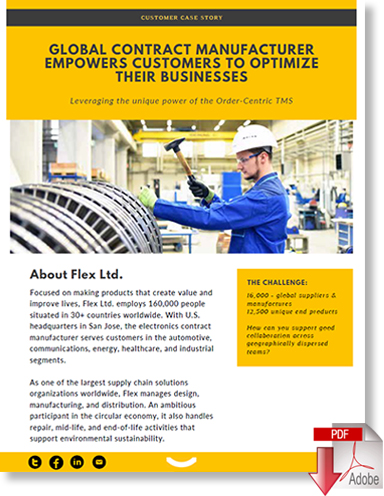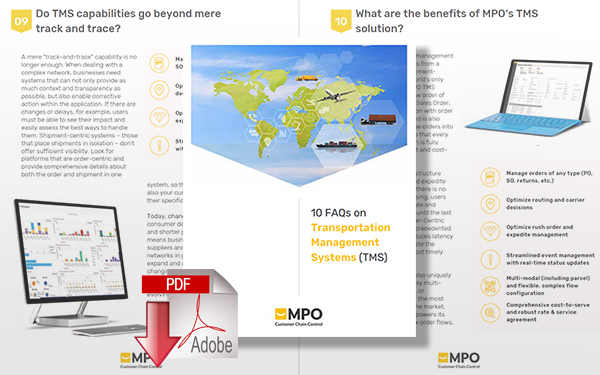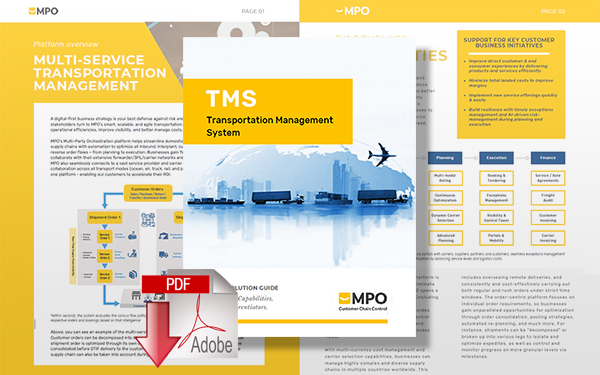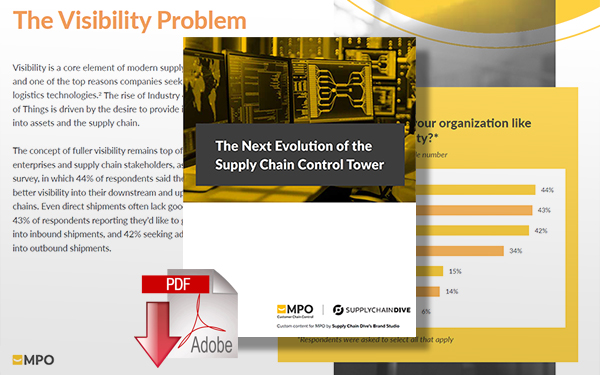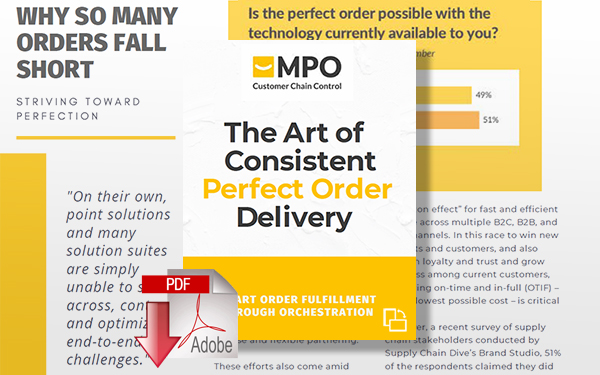5 Costly Mistakes Logistics Executives Make When Choosing a Transportation Management System

When choosing a transportation management system having a technology strategy in place will ensure you ask the right questions, avoid costly mistakes, and select the best option for your business.
Transportation Management System
Demand is rising for logistics and transportation services, which has many stakeholders looking for a robust transportation management system (TMS).
However, solutions vary widely, and what’s bright and shiny and new may not ultimately be right for your businesses. It’s not uncommon for logistics teams that are unprepared to invest in software only to discover it doesn’t integrate with current systems or poses a language barrier to some of its users.
It’s also possible that a couple of years down the line as your organization evolves, the chosen TMS lacks critical capabilities to support that growth.
Having a technology strategy in place will ensure you ask the right questions, avoid costly mistakes, and select the best option for your business in the long term.
Here’s a quick guide to the top 5 mistakes executives make when choosing a transportation management system and how to avoid them.
Mistakes to Avoid When Selecting Transportation Management Software
1. Selecting a solution without a technology strategy
There are many reasons why logistics teams may start thinking about purchasing transportation management software. Some look to eliminate manual processes, others feel stuck in their legacy systems and desire more flexibility to meet the evolving demands of the modern supply chain. That’s why when clients come to Metafora seeking TMS solution recommendations, Metafora consultants prefer to talk about the larger tech strategy first. “We recommend management consulting to all our customers and to the shipper market,” says Steven Godfrey, VP of Technology at Metafora (formerly CarrierDirect).
“While a TMS solution is very important in itself, a transportation management system by itself is not a tech strategy – it’s part of a larger technology strategy.”
The search for transportation management software is typically spurred on by pain points and challenges executives are looking to solve. But there are other considerations that are critical to the process, for instance;
- What other software or solutions might you need to consider together?
- Is there a need for cloud migration?
- If the company is on legacy systems, what’s the plan to update or modernize to ensure that data is part of the overall tech strategy?
For the initiative to be comprehensive and run smoothly, “we’ll do a tech audit, looking into workflows and business process, as well as organization roadmaps to determine the best supply chain technology solution overall,” says Godfrey.
2. Prioritizing pain points over larger business goals
From rising logistics costs to capacity constraints, many turn to transportation management systems for fast relief. Still, one of the biggest traps is leading initiatives with a narrow perspective. A standalone TMS solution that focuses solely on a pain point may not be the best option for your business’s long-term needs. For example, most TMS systems only provide visibility over execution, many are not multi-modal, or if they are, don’t necessarily include all modes, such as parcel, which can be a costly and cumbersome piece to implement and integrate separately.
“Businesses need to start thinking holistically,” says MPO VP Solutions, Vijay Natarajan. Vijay has been helping organizations transform their supply chains for over 20 years and finds that his greatest successes have come from understanding a company’s unique needs and real-world challenges.
“It happens quite frequently that a team comes to us looking for a TMS, but as we delve deeper into the core problems the greater organization is looking to solve, we often find that in fact they also need an inventory solution that is tightly coupled with order management and returns management.”
Integrated solutions these days offer tremendous business value for both domestic and global companies. Supply chain cloud platforms allow organizations to optimize both across the entire company (not individual departments) as well as optimize across the entire supply chain (not just separate nodes). Because they are adaptable, flexible, and scalable, they solve immediate pain points, like digitizing and automating logistics processes, establishing visibility, and delivering on time and in full at a lower cost-to-serve, while also addressing bigger goals like becoming more sustainable, expanding omnichannel fulfillment, and growing the partner network.
3. Proceeding without clearly defining what “success” means for the initiative
Before meeting with vendors, it’s important to consider how your wants and needs align with your definition of success with the TMS. What metrics and outcomes resonate most with you and your team? Will it be a fast or high return on investment (ROI)? Or are you acquiring transport management software because you need to serve a new client under strict deadlines? In this case, how quickly the software can implement may be a far more meaningful metric on which to judge solution options. “Being able to articulate the business impact of a software is paramount to beginning an initiative and taking it through completion,” says Vijay.
For some, how easily a TMS will be adopted within their team or organization may be a priority, or how much control they may want or require from the software. If you’re scaling, growing, or are serving a diverse customer base, each with its own service levels, requirements, and constraints, you may want greater flexibility and control over configuring new and complex order flows.
There are many considerations and potential tradeoffs to make regarding timeframe, cost, and benefits when vetting supply chain software options. Taking the time to prepare and prioritize your needs and metrics for success ensures you ask the right questions when speaking with vendors and going through the demo process.
4. Not making the best choices around integration
Did you know that companies can lose $500K to over $1M per year to supply chain-related integration issues? When it comes to supply chain software, Metafora encourages its clients to consider the notion of buying versus building. “We typically recommend to buy what you can and then build what will differentiate you,” Godfrey adds, “this allows your product team to focus on what they do best as you outsource experts for backend integration.”
Carriers, brokers, shippers, and third-party freight tech companies must be able to easily share data between their systems and their partners’ systems. Yet, poor business-process integration with ecosystems is causing much of that cost leak. It’s why Metafora created Socket. The socket is a configurable, integration product, developed to enable easier, faster integration between freight businesses while offloading integration maintenance and management. The MPO platform also leverages Socket to facilitate faster and lower-cost integrations with the logistics service providers.
The concept of ‘build vs buy’ also ties back into the ‘must have’ and ‘nice to have’ features which impact budget and timeline. Flexible, configurable technologies are often the way to go for quick time to value your initiative. Businesses can begin with a standardized TMS solution and then configure and scale from there, adding new flows for expanded services, such as reverse flows, invoice matching capabilities, or even extending order management and planning capabilities.
5. Implementation without a change management process
Selecting the best Transportation Management System for your organization’s needs and goals is only half of the equation. Successful implementation and adoption of the technology are just as critical. Alastair Breheny, Director of Consulting at Metafora explains;
“Whenever we introduce a new TMS or supply chain software or solution to a company, we make it a point to ensure that change management and training is done properly. It means going beyond the initial training of what buttons to press; rather, long-term success is defined by ongoing training that drills into why the solution is important and why it’s going to help everyone.”
Even excellent supply chain software can fail to implement without a strong team to implement it, as well as continuous communication and training to encourage a shared vision and informed approach to using the tool to its fullest potential.
Metafora (formerly Carrier Direct) is a business consulting and software development firm that exclusively serves the transportation, logistics, and supply chain space. MPO and Metafora have recently partnered to ensure customers avoid common pitfalls with a smart and future-focused technology strategy that optimizes their business. Want to learn more about what a robust transportation management system can do for you? Learn about the capabilities enabling a future-focused technology strategy, immediate pain point resolution, and fast time to value by downloading the TMS FAQ below.
You can also get in touch by reaching out to [email protected], [email protected], or requesting a demo today
Related Resources
10 FAQs on Transportation Management System (TMS)
Use this FAQ to explore the most common questions we hear about transportation management systems (TMS) to make the best, most informed decision for your business needs and goals. Download Now!
Transportation Management System Solution Guide
Access this brief guide to MPO's Transportation Management Solution, benefits, capabilities, and differentiators - including an Order-Centric TMS checklist. Download Now!
The Next Evolution of the Supply Chain Control Tower
This white paper explores why visibility is a core element of modern supply chain digitization, and a top reason to implement logistics technologies in your supply chain. Download Now!
The Art of Consistent Perfect Order Delivery
This white paper defines what a perfect order is and details the technology that helps leaders achieve smart order fulfillment through optimized supply chain orchestration. Download Now!
More Resources from MPO
Related Article: What to Look For In a Transportation Management System
Article Topics
MPO News & Resources
TMS+ Go Beyond Transport to Optimize Cost, Service, & Resiliency Multi-Party Orchestration Platform When It Comes to Digital Transformation You May Not Be Doing What You Think How Chief Operating Officers are Achieving Results with Supply Chain Software SPARK Matrix Transportation Management System Software Analyst Report Top Trends Driving Change and Technology Strategy Within Logistics & Transportation Management 5 Key Steps for Optimizing your Last Mile Delivery More MPOLatest in Transportation
Baltimore Opens 45-Foot Deep Channel Following Bridge Collapse El Paso Border Delays Cost Juarez $32 Million Per Day in Economic Losses Ranking the World’s 10 Biggest Supply Chains The Top 10 Risks Facing Supply Chain Professionals Walmart’s Latest Service: Ultra Late-Night Delivery City of Baltimore Files Lawsuit to Recoup Money for Collapsed Bridge The Era of Self-Driving Tractor-Trailers Set to Begin More Transportation

